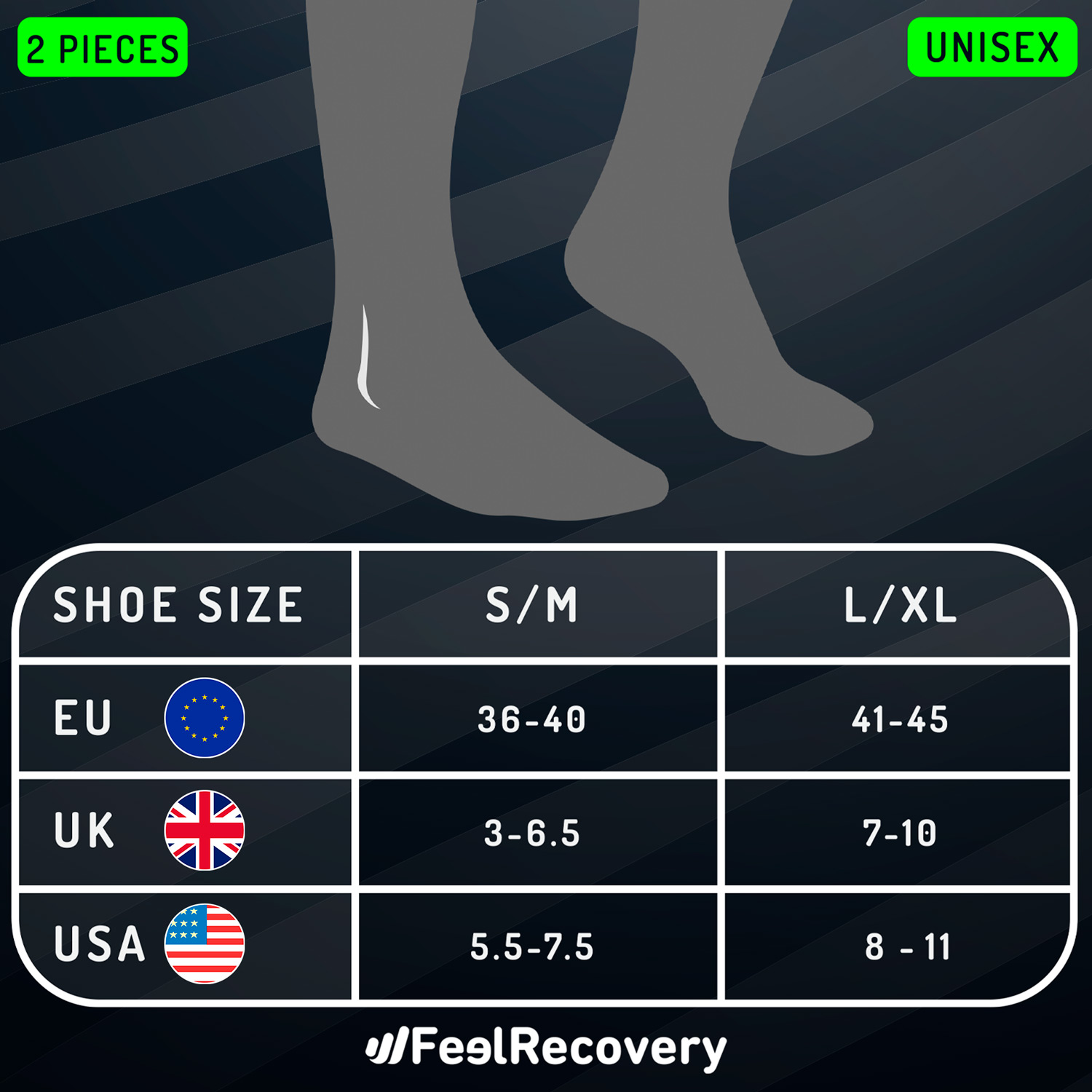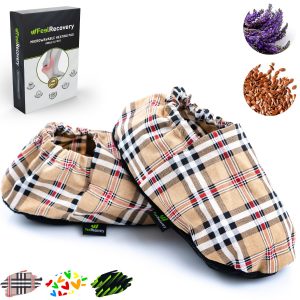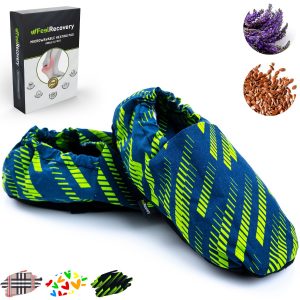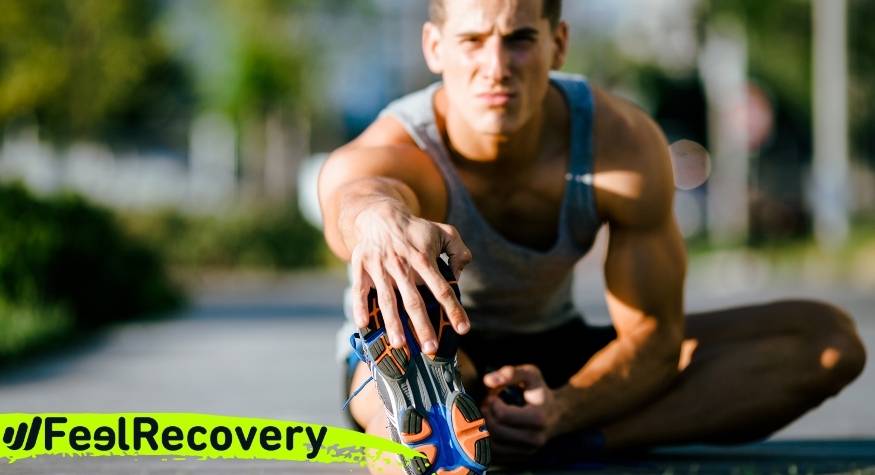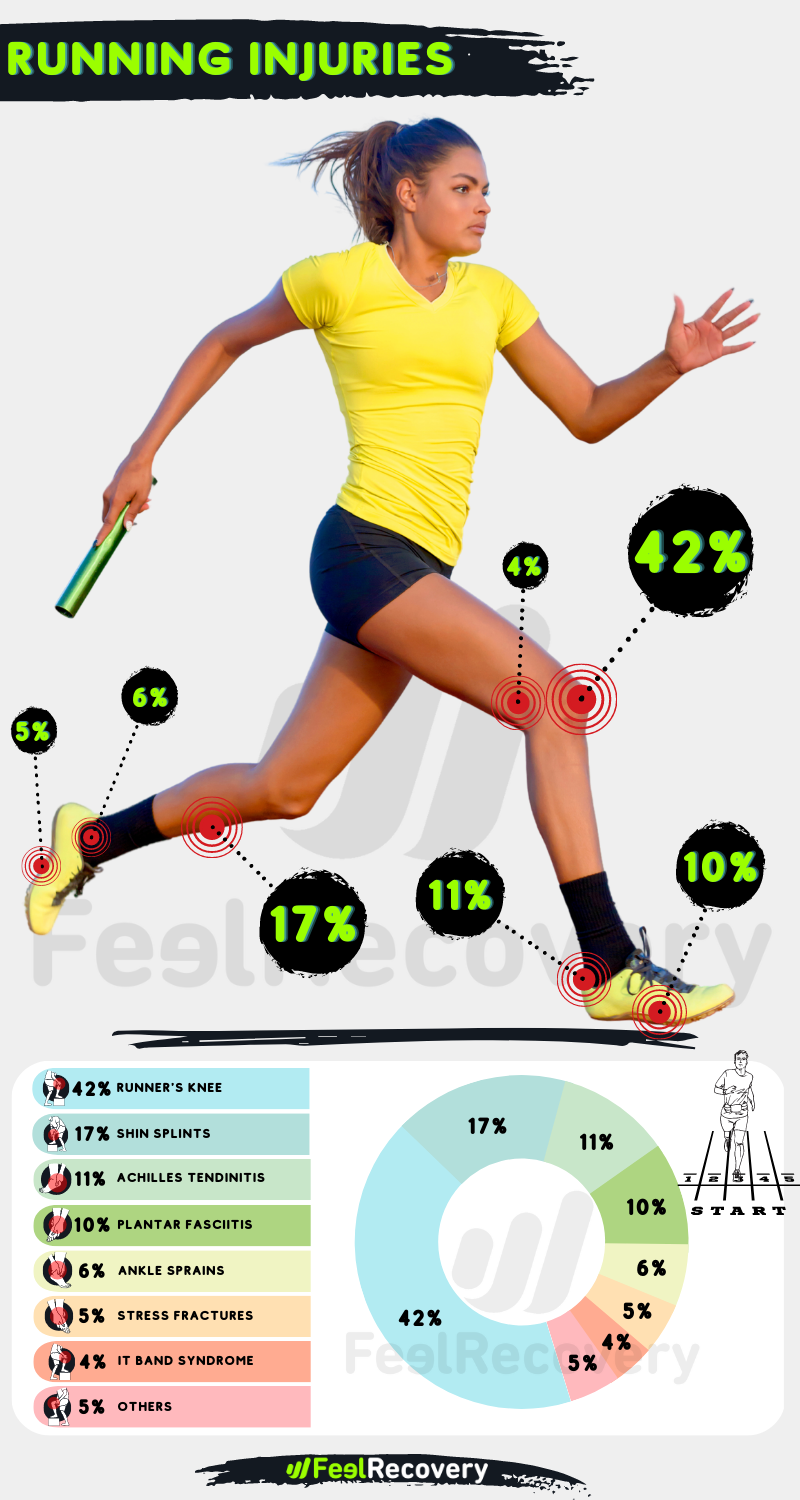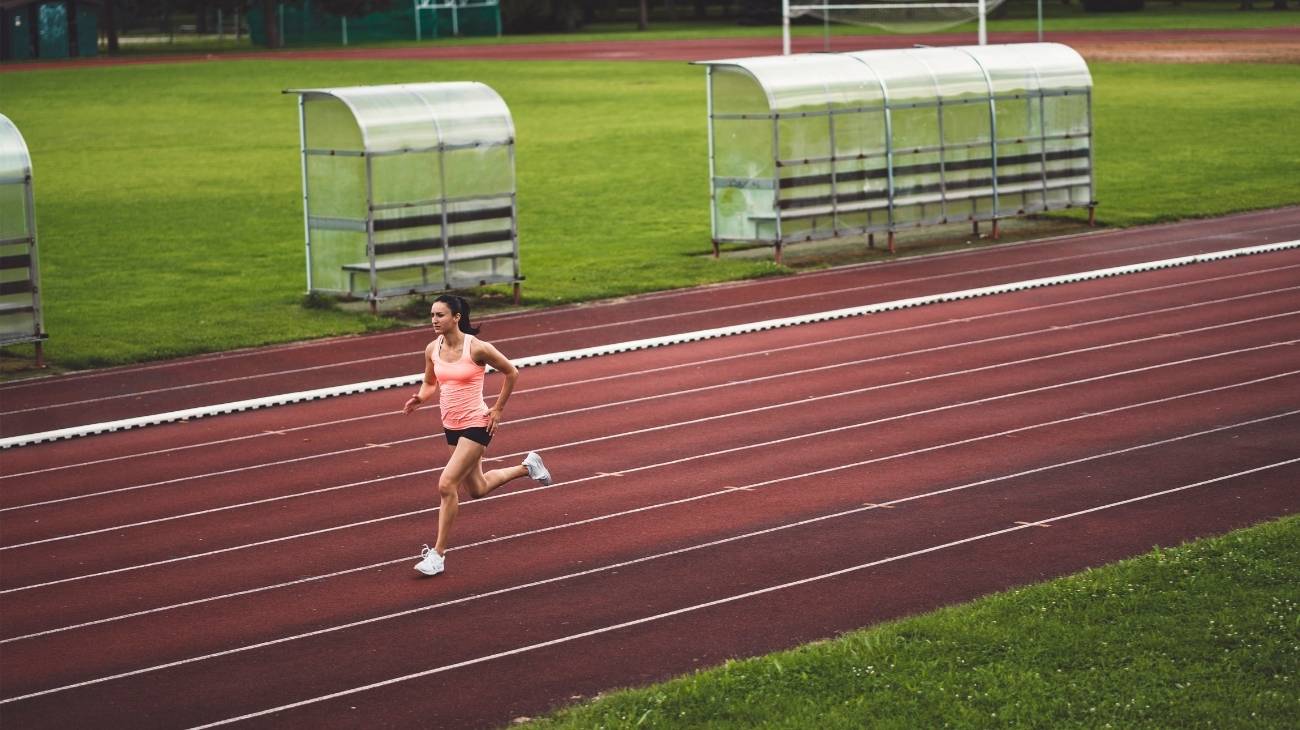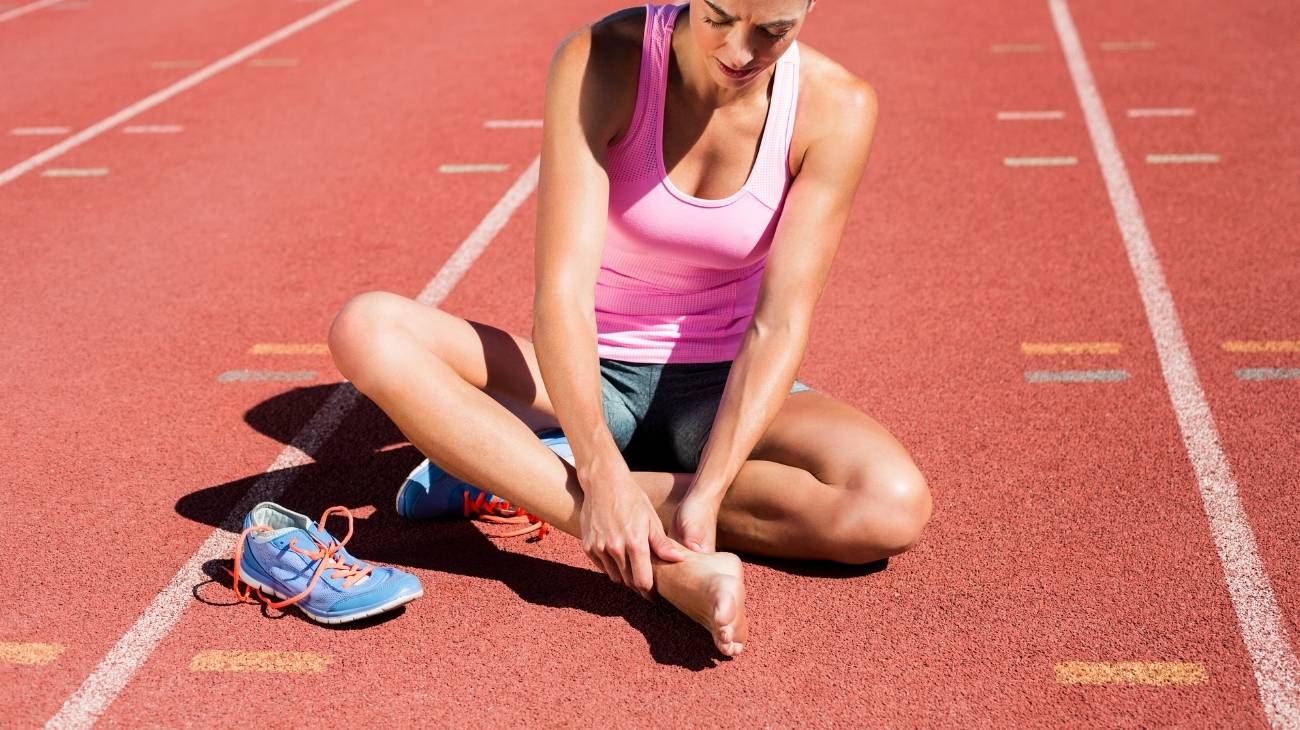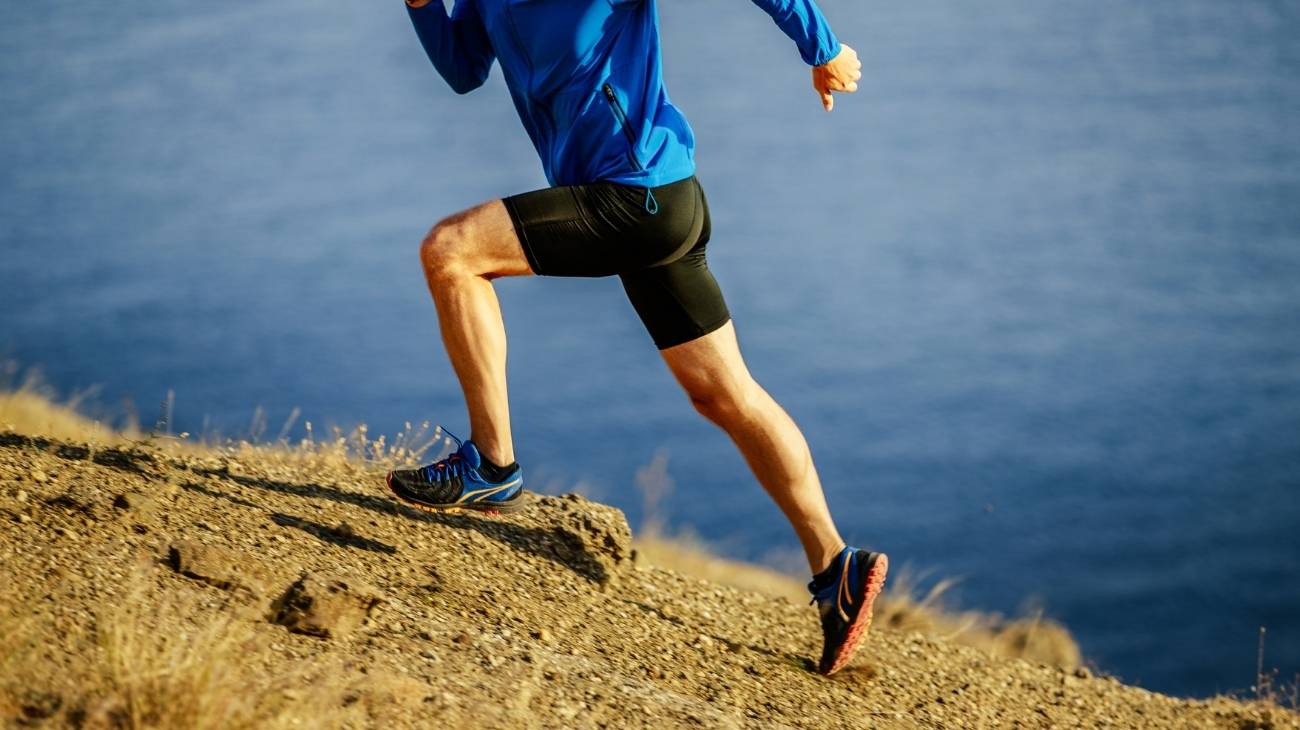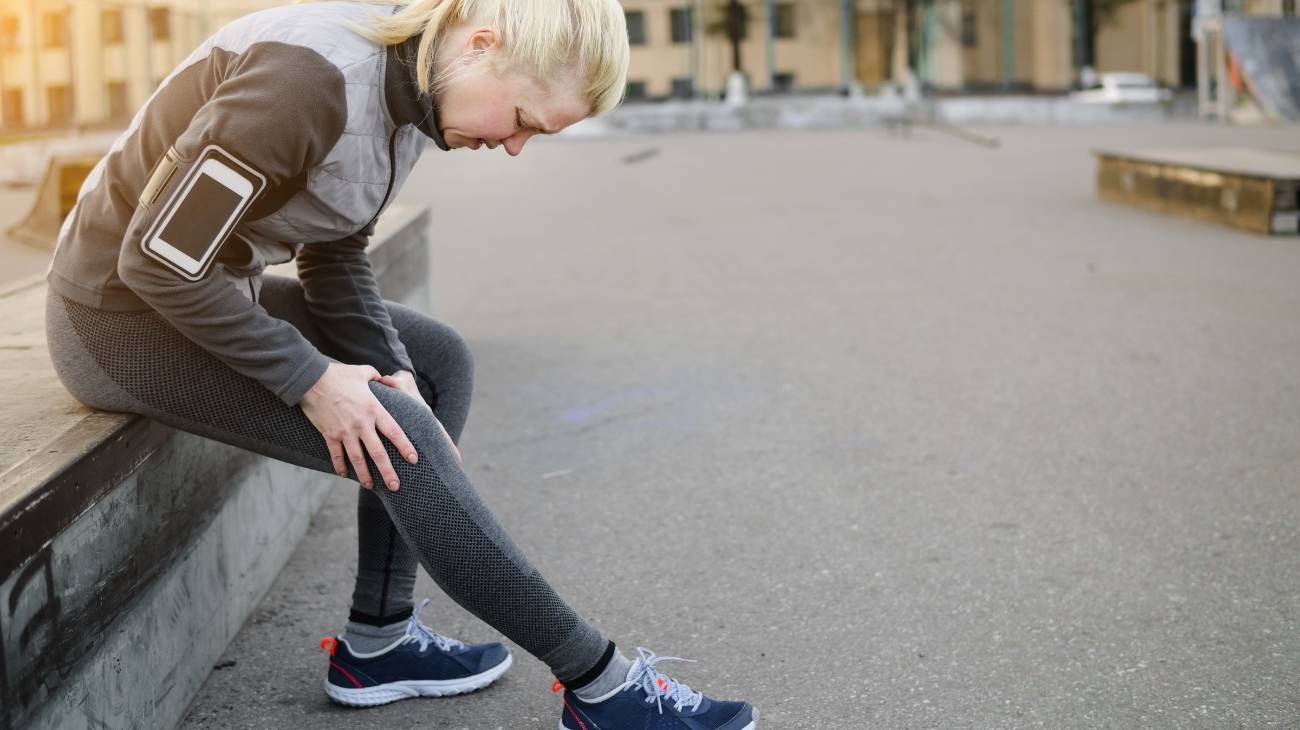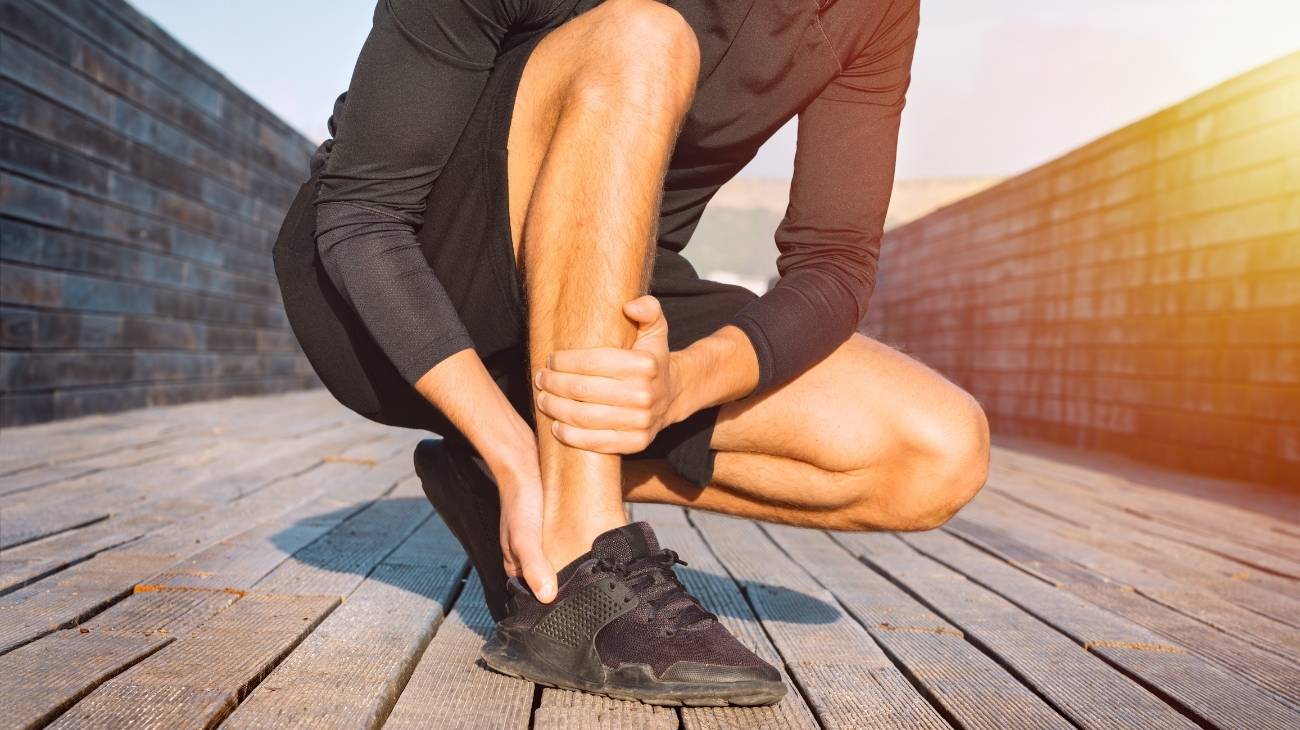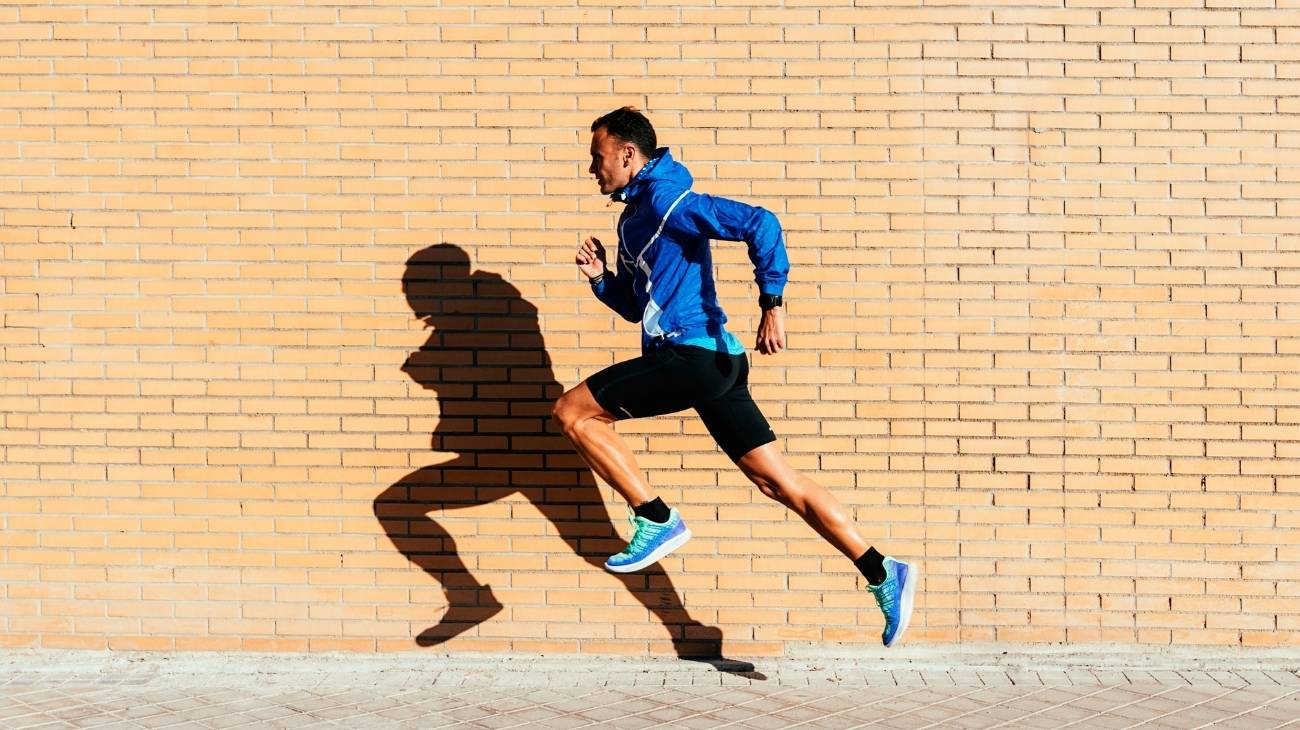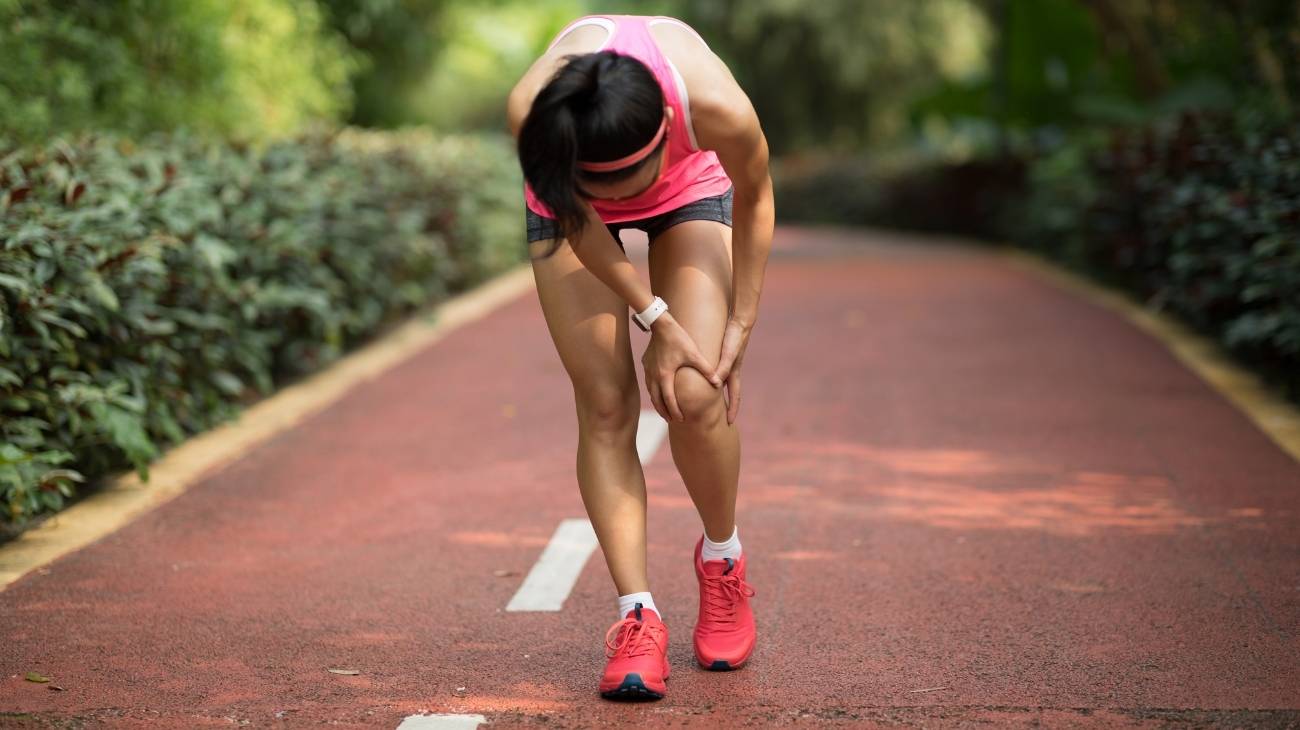Running is one of the most popular sports all over the world, and you don't necessarily have to do it as a professional, as the simple fact of going out for a run will bring you multiple benefits to your physical and above all mental health, as running releases many toxins and reduces stress considerably.
However, being a high-impact sport, it also has its risks and injuries that you must learn to prevent in order to be at the highest level every day you practice your favourite sport and thus minimise these risks as much as possible.
What are the most common types of running injuries?
Most running injuries are related to the lower body. Rarely will a runner have wrist injuries as most of them occur from the waist down.
Here are some of the most common ones:
- Patellar tendonitis: this is an inflammation of the patellar tendon, which is responsible for absorbing all the impact generated when running. It is not usually an injury that appears as a result of a one-off event, but due to the accumulation of wear and tear in the soft tissue that causes it to become irritated.
- Ankle sprain: when we make a bad step while running the ankle can twist and cause the ligaments to stretch too much, causing damage to the ligaments that can range from a micro-tear to a complete tear. The joint will immediately become inflamed and we will have to stop physical activity for several days depending on the severity of the injury.
- Meniscus tear: it is not a common occurrence, but if we unfortunately suffer a sharp fall during a run that causes us to fall on our own knee, we can suffer a sprain that damages our meniscus. This is a serious injury that, if not treated properly, will require surgery to repair the injured meniscus.
- Achilles tendonitis: this is an inflammation of the Achilles tendon, which connects the back of the calf to the heel. Like the patellar tendon, it becomes inflamed due to the accumulation of wear and tear and stress during running, which will require us to stop running for several days.
- Muscle overload: this is the accumulation of tension and stress in a muscle that causes its tissues to become inflamed and require more rest than normal to recover. It can occur from running at a higher intensity or simply from overdoing it and not getting the rest that the quadriceps, hamstrings or calf muscles need. Caution should be exercised, because if it is not treated properly, it could end up in a fibrillar rupture.
Best products for running injury recovery
Bestseller
-
2 Ankle Compression Sleeve (Green/Navy)
£20,95 -
2 Ankle Compression Sleeve (Pink/Bordeaux)
£20,95 -
2 Calf Compression Sleeve (Black/Gray)
£20,95 -
2 Calf Compression Sleeve (Green/Navy)
£20,95 -
2 Calf Compression Sleeve (Pink/Bordeaux)
£20,95 -
2 Knee Compression Sleeve (Black/Gray)
£20,95 -
2 Knee Compression Sleeve (Green/Navy)
£20,95 -
2 Knee Compression Sleeve (Pink/Bordeaux)
£20,95 -
2 Thigh Compression Sleeve (Black/Gray)
£20,95 -
2 Thigh Compression Sleeve (Green/Navy)
£20,95 -
2 Thigh Compression Sleeve (Pink/Bordeaux)
£20,95 -
Ice Pack for Foot - Cold Therapy Socks (Black)
£20,95 -
Ice Pack for Foot - Cold Therapy Socks (Green)
£20,95 -
Ice Pack for Foot - Cold Therapy Socks (Pink)
£20,95 -
Microwavable Heated Slippers (Hearts)
£24,95 -
Microwavable Heated Slippers (Oxford)
£24,95 -
Microwavable Heated Slippers (Sport)
£24,95 -
Microwaveable Wheat Bag for Pain Relief (Hearts)
£20,95 -
Microwaveable Wheat Bag for Pain Relief (Oxford)
£20,95 -
Microwaveable Wheat Bag for Pain Relief (Sport)
£20,95
-
2 Ankle Compression Sleeve (Black/Gray)
£20,95 -
2 Patella Knee Strap (Black/Gray)
£12,95 -
2 Patella Knee Strap (Green/Navy)
£12,95 -
2 Patella Knee Strap (Pink/Bordeaux)
£12,95 -
Back Support Belt (Black)
£39,95 -
Back Support Belt (Green)
£39,95 -
Back Support Belt (Pink)
£39,95 -
Foot Massage Roller for Plantar Fasciitis (Black)
£20,95 -
Foot Massage Roller for Plantar Fasciitis (Green)
£20,95 -
Foot Massage Roller for Plantar Fasciitis (Pink)
£20,95 -
Ice Massage Roller Ball (Black)
£34,95 -
Ice Massage Roller Ball (Green)
£34,95 -
Ice Massage Roller Ball (Pink)
£34,95 -
Sacroiliac Support Belt (Black)
£24,95 -
Sacroiliac Support Belt (Green)
£24,95 -
Sacroiliac Support Belt (Pink)
£24,95 -
Soft Density Foam Roller for Recovery (Black)
£34,95 -
Soft Density Foam Roller for Recovery (Green)
£34,95 -
Soft Density Foam Roller for Recovery (Pink)
£34,95 -
Sport Compression Socks (1 Pair) (Black/Gray)
£20,95 -
Sport Compression Socks (1 Pair) (Green/Navy)
£20,95 -
Sport Compression Socks (1 Pair) (Pink/Bordeaux)
£20,95
List of injury prevention methods for runners and athletes
Fortunately, there are several methods to prevent all kinds of injuries and to stay at 100% for as long as possible. It is important that you take all these precautions to minimise the risk of suffering from any of the aforementioned ailments while running.
Warm up properly
You should always warm up well before starting any physical activity. In the case of running you will need to mobilise your whole body, even if you think you will only use your legs, you should stretch everything from head to toe. Starting with your neck, shoulders and waist, and ending with your knees, legs and ankles. Keep in mind that your whole body will be stressed by the impact generated during the run.
Once you have done this, proceed with a gentle jog that raises your heart rate slightly to prepare you for the physical activity you are about to perform. In this way all your muscles will be prepared for a higher intensity run and will be able to withstand it better.
It is not necessary to do muscle stretching exercises, it is more advisable to do joint mobility, running technique exercises and some short sprints at 70-80% intensity to activate your heart rate and start your training in good condition.
Finish your workouts with a cool down
A common mistake made by novice runners is to stop completely after a long run because of fatigue. Instead of being a good thing, this creates a big shock to the whole body, especially your cardiovascular system, so you should never do it.
The correct way to cool down is to lower the intensity of your jogging after you reach the end of the route, and continue to lower it until you finish walking for 5 to 10 minutes. Do not stop until your breathing and heart rate have stabilised. When this is achieved, proceed to stretch all the muscles in your body, to release the tension accumulated in them and allow them to enter a period of rest of better quality.
Also, to complete the training session, you can do some abdominal exercises and strengthen your lower back and arms. In this way we will avoid future injuries by working our body as a whole.
Good nutrition and hydration
Nutrition is essential for anyone who does sport. The normal intake for a runner should be at least 2500 calories if you run for 30 minutes or less, and up to 3000 Kcal if you run for more than 1 hour.
In addition, you should eat healthily by incorporating fresh fruit and vegetables into your diet to provide your body with quality micronutrients to help your muscles build up resistance to injury. Minerals such as magnesium and zinc will help your muscles relax after a hard workout.
Hydration is also vital, there is no exact measure of water intake, but professionals usually drink equivalent to the amount of sweat they secrete during the race. How can you know this? Well, you should weigh yourself before you go running and weigh yourself again at the end of the session, the difference in weight is the amount of litres of water you need to recover. We usually sweat between 1 and 2 litres of water in a 3 to 5 kilometre run, although this also depends on the intensity and speed of the run.
Improve your fitness
Here we mean that your body should always be prepared for the demands of your running. So if you are a beginner in the world of running, you should start with gentle routes until your body acquires the aerobic and anaerobic endurance necessary to withstand much more intense sessions.
What is recommended if you want to increase the pace of your sessions is that after you get used to a route, add 1 more minute of jogging at the same intensity so that your body can assimilate the extra demand, and so on until you achieve the goal you have set for yourself.
If you are just starting to run and you can't last 15 minutes at a time, it is advisable to alternate 2-3 minutes of gentle running with another 4-5 minutes of fast walking, so that little by little, our body and joints get used to running for longer periods of time.
Sports massage
This is undoubtedly one of the best allies for any athlete. Regular massages at least once or twice a week release a lot of tension in the muscles, which strengthens them and makes them more resistant to injury. In the case of runners, the most important areas are undoubtedly the legs and lower back, although the neck and cervical vertebrae should never be neglected.
There are 3 massage techniques that are essential; percussion, kneading and stretching. With these three you will achieve a relaxing effect on the muscle. It is best to always have it applied by a knowledgeable third party rather than doing it yourself as the release of endorphins is not the same and this is key to achieving the relaxation we are looking for.
Use of hot and cold therapies
Cold and heat are antonyms, but they can help us to achieve a single goal; to improve the ability of our muscles to resist injury, or to speed up recovery after an injury. With heat, what we are looking for is a relaxing effect in which the muscle fibres and blood vessels dilate and facilitate the absorption of nutrients.
With cold, the opposite is achieved and the blood vessels are compressed and inflammatory processes are reduced. In addition, when used outside of injury it also has a relaxing effect when the muscle fibres decompress after being subjected to low temperatures.
Use of compression garments
Compression garments have innumerable benefits for general health. First of all, it provides vasoconstriction, which allows for better blood circulation during exercise. In addition, it allows us to better absorb the impact during the race so that the muscle does not suffer so much.
In running we can use compression stockings. And if we have already suffered an injury, we can opt for knee braces, thigh sleeves or compression ankle braces. If we are looking for a more complete garment, there are compression sweatshirts that keep the torso and arms firm.
Use of acupressure therapies
Acupressure is a practice that consists of applying pressure on certain points of the body to release tension that accumulates in them, achieving a state of general relaxation that favours the release of endorphins. Fingertips are usually used to touch these points, and it should always be performed by a trained professional.
Use of thermotherapy and cryotherapy
Thermotherapy achieves a general relaxation effect, as well as improving blood circulation throughout the body, which in turn releases a large amount of endorphins. While cryotherapy applies cold to strengthen blood vessels, relieve pain from trauma or sprains and eliminates a large amount of toxins.
Together, these two therapies can help you both to prevent injuries by significantly improving the quality of muscle fibres, and to speed up recovery from injuries to muscles and joints.
Using the good equipment
One of the most common causes of injury is from using the wrong equipment. Whether it is footwear or sportswear, it is important to always use the right clothing to keep injuries to a minimum. Sometimes we wear clothing that chafes and restricts our running.
The most important thing is the footwear, which must be conditioned to absorb the impact generated when running. Inadequate footwear that does not absorb the impact can lead to sprains and bursitis, cramps and even fractures. Before choosing your running shoes, study your stride and check whether you are pronator, supinator or neutral, a podiatrist or sports physiotherapist will be able to analyse this parameter.
As for clothing, you can wear shorts or long trousers, but it is advisable to wear compression clothing so that it absorbs the vibrations of our muscles produced in the race, they are also breathable and wick away perspiration.
References
- Fields, K. B., Sykes, J. C., Walker, K. M., & Jackson, J. C. (2010). Prevention of running injuries. Current sports medicine reports, 9(3), 176-182. https://journals.lww.com/acsm-csmr/Fulltext/2010/05000/Prevention_of_Running_Injuries.00014.aspx
- Van Mechelen, W. (1992). Running injuries: a review of the epidemiological literature. Sports medicine, 14, 320-335. https://link.springer.com/article/10.2165/00007256-199214050-00004
- Messier, S. P., & Pittala, K. A. (1988). Etiologic factors associated with selected running injuries. Medicine and science in sports and exercise, 20(5), 501-505. https://europepmc.org/article/med/3193867
- Lysholm, J., & Wiklander, J. (1987). Injuries in runners. The American journal of sports medicine, 15(2), 168-171. https://journals.sagepub.com/doi/abs/10.1177/036354658701500213
- Hamill, J., van Emmerik, R. E., Heiderscheit, B. C., & Li, L. (1999). A dynamical systems approach to lower extremity running injuries. Clinical biomechanics, 14(5), 297-308. https://www.sciencedirect.com/science/article/abs/pii/S0268003398900924
- Arnold, M. J., & Moody, A. L. (2018). Common running injuries: evaluation and management. American family physician, 97(8), 510-516. https://www.aafp.org/pubs/afp/issues/2018/0415/p510.html
- van Mechelen, W., Hlobil, H., Kemper, H. C., Voorn, W. J., & de Jongh, H. R. (1993). Prevention of running injuries by warm-up, cool-down, and stretching exercises. The American journal of sports medicine, 21(5), 711-719. https://journals.sagepub.com/doi/abs/10.1177/036354659302100513
- Junior, L. C. H., Costa, L. O. P., & Lopes, A. D. (2013). Previous injuries and some training characteristics predict running-related injuries in recreational runners: a prospective cohort study. Journal of Physiotherapy, 59(4), 263-269. https://www.sciencedirect.com/science/article/pii/S1836955313702030
- Saragiotto, B. T., Yamato, T. P., Hespanhol Junior, L. C., Rainbow, M. J., Davis, I. S., & Lopes, A. D. (2014). What are the main risk factors for running-related injuries?. Sports medicine, 44, 1153-1163. https://link.springer.com/article/10.1007/s40279-014-0194-6
- Brody, D. M. (1982). Techniques in the evaluation and treatment of the injured runner. The orthopedic clinics of North America, 13(3), 541-558. https://europepmc.org/article/med/6124922






























